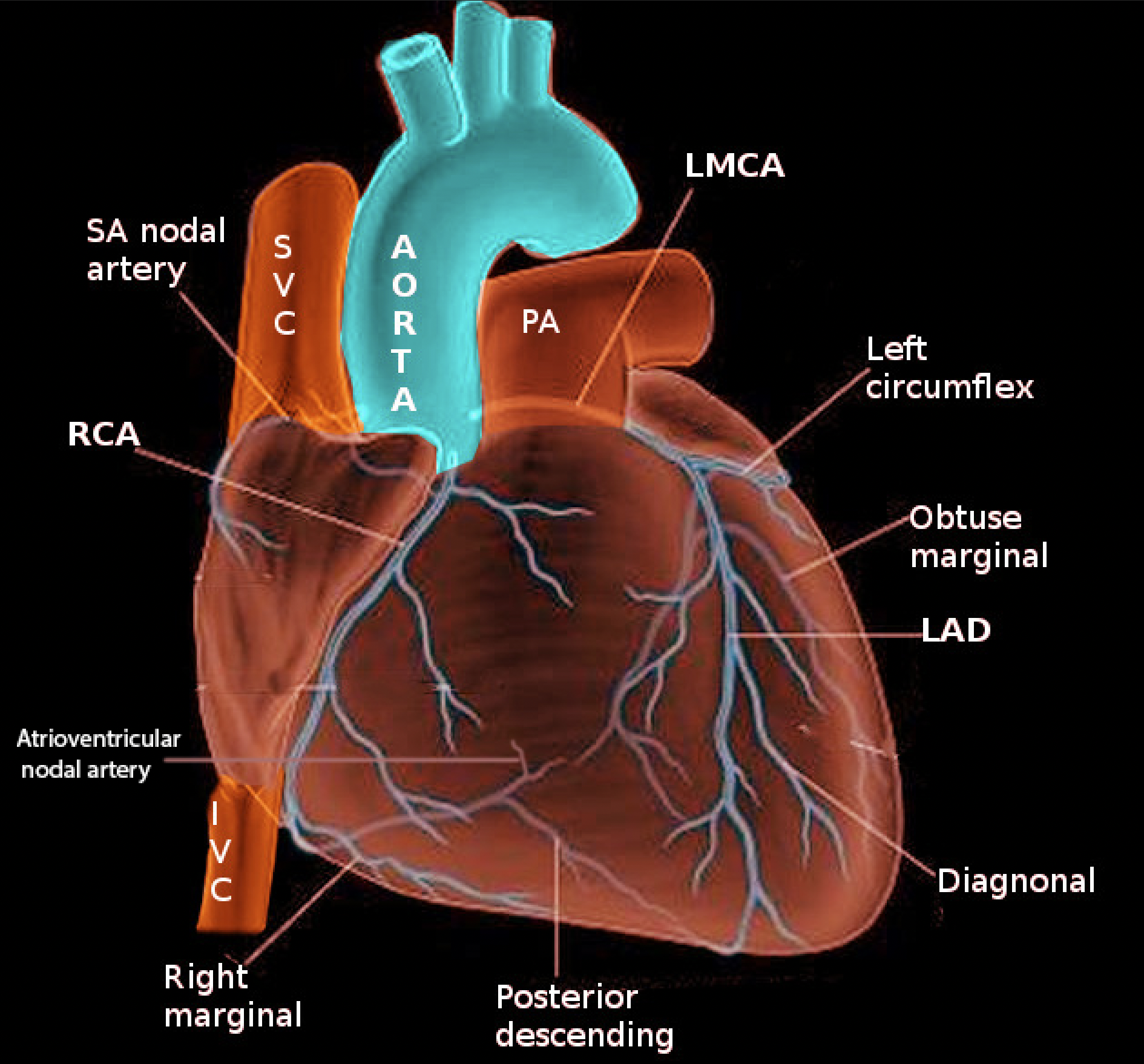[1]
Pejković B, Krajnc I, Anderhuber F, Kosutić D. Anatomical aspects of the arterial blood supply to the sinoatrial and atrioventricular nodes of the human heart. The Journal of international medical research. 2008 Jul-Aug:36(4):691-8
[PubMed PMID: 18652764]
[2]
JAMES TN, BURCH GE. Blood supply of the human interventricular septum. Circulation. 1958 Mar:17(3):391-6
[PubMed PMID: 13511658]
[3]
Chiu IS, Anderson RH. Can we better understand the known variations in coronary arterial anatomy? The Annals of thoracic surgery. 2012 Nov:94(5):1751-60. doi: 10.1016/j.athoracsur.2012.05.133. Epub 2012 Oct 2
[PubMed PMID: 23036687]
[4]
Huang LH, Lavine KJ, Randolph GJ. Cardiac Lymphatic Vessels, Transport, and Healing of the Infarcted Heart. JACC. Basic to translational science. 2017 Aug:2(4):477-483. doi: 10.1016/j.jacbts.2017.02.005. Epub 2017 Aug 28
[PubMed PMID: 28989985]
[5]
Shriki JE, Shinbane JS, Rashid MA, Hindoyan A, Withey JG, DeFrance A, Cunningham M, Oliveira GR, Warren BH, Wilcox A. Identifying, characterizing, and classifying congenital anomalies of the coronary arteries. Radiographics : a review publication of the Radiological Society of North America, Inc. 2012 Mar-Apr:32(2):453-68. doi: 10.1148/rg.322115097. Epub
[PubMed PMID: 22411942]
[6]
Apitzsch J, Kühl HP, Mühlenbruch G, Mahnken AH. Unusual malignant coronary artery anomaly: results of coronary angiography, MR imaging, and multislice CT. Cardiovascular and interventional radiology. 2010 Apr:33(2):389-93. doi: 10.1007/s00270-009-9663-y. Epub 2009 Aug 6
[PubMed PMID: 19657692]
[7]
Karadag B, Ayan F, Ismailoglu Z, Goksedef D, Ataev Y, Vural VA. Extraordinary cause of ischemic chest pain in a young man: congenital ostial atresia of the right coronary artery. Journal of cardiology. 2009 Oct:54(2):335-8. doi: 10.1016/j.jjcc.2009.01.008. Epub 2009 Feb 25
[PubMed PMID: 19782277]
[8]
Villa AD, Sammut E, Nair A, Rajani R, Bonamini R, Chiribiri A. Coronary artery anomalies overview: The normal and the abnormal. World journal of radiology. 2016 Jun 28:8(6):537-55. doi: 10.4329/wjr.v8.i6.537. Epub
[PubMed PMID: 27358682]
Level 3 (low-level) evidence
[9]
Angelini P, Trujillo A, Sawaya F, Lee VV. "Acute takeoff" of the circumflex artery: a newly recognized coronary anatomic variant with potential clinical consequences. Texas Heart Institute journal. 2008:35(1):28-31
[PubMed PMID: 18427647]
[10]
Menke DM, Waller BF, Pless JE. Hypoplastic coronary arteries and high takeoff position of the right coronary ostium. A fatal combination of congenital coronary artery anomalies in an amateur athlete. Chest. 1985 Aug:88(2):299-301
[PubMed PMID: 4017686]

